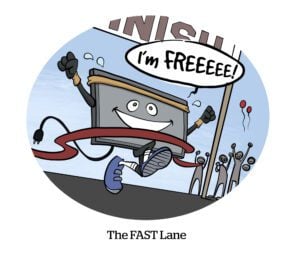Until now, ad units on the Fire TV home screen were limited to media and entertainment brands and programmers promoting their own shows.
But starting on Wednesday, Amazon will begin making this inventory available to any type of advertiser so all brands have an opportunity to get in front of viewers before they’re sucked into an ad-free show, said Charlotte Maines, director of Fire TV advertising, monetization and engagement.
The expansion is not unlike Roku’s recent move to open up home screen inventory to brands outside of the media and entertainment category.
Amazon is also launching a new ad unit within search results on Fire TV that’s limited to media and entertainment advertisers.
The Fire TV viewer base is now big enough to justify investments to expand ad capabilities to more marketers, Maines said.
Fire TV has been focused on adding new content over the past year to grow viewership, including Fire TV Channels, a new hub of free ad-supported TV channels Amazon launched in October 2022 and publicly unveiled during its NewFronts event in May.
According to Amazon, viewers watching Fire TV Channels increased eightfold between January and September. Monthly streaming hours tripled in the same time span.
Screen time
And where there are viewers, there are advertisers looking for ways to reach them, even if they only subscribe to ad-free streaming.
Through direct deals, advertisers can now choose to buy inventory specific to Fire TV Channels or devices, including Fire sticks and TCL TVs that use the Fire TV operating system.
The formats include rotating hero units on the home screen, which are display ads that play video when users click them (for brands of any vertical), and sponsored tiles that appear beside search queries (for media and entertainment advertisers). Buyers can target sponsored tiles by genre. A programmer, for example, could pay to promote scary movies in its IP to viewers searching for horror content around Halloween.
In addition to reaching viewers that prefer ad-free streaming (as in, most of them), TV display inventory gives buyers access to a more exclusive audience they’re unlikely to find on other TV devices, Maines said. Audience exclusivity is often part of a TV manufacturer’s pitch to advertisers.
Based on Nielsen data, although 23% of Fire TV users also own a Samsung TV, only 10% of Fire TV viewers have an LG TV and just 8% own a Roku-operated TV.
Adding new ad targeting options to Fire TV is a way to offer advertisers “an audience that’s largely incremental” or additive to the streaming buys they’re already making, Maines said.

Better together
Brands can also choose to bundle Fire TV ad units with their other streaming buys on Amazon, which logically would include Prime Video (once the streaming service launches ads early next year), although Amazon declined to confirm Prime Video’s inclusion in this new ad bundle.
Display and search ads on TV home screens appear to work best when they’re paired with typical 15- or 30-second spots.
According to Amazon, Fire TV display units drive 125% more incremental reach when they’re grouped with a streaming campaign. They also drive a 153% YOY increase in retail brand awareness growth compared with classic streaming buys alone.
Speaking of retail, Amazon plans to eventually add more targeting capabilities to its new inventory, Maines said, since it has a massive amount of first-party retail and ecommerce data.
“Over time,” Maines said, “we’ll figure out what data we can share for buyers to layer on [more advanced] targeting.”

















